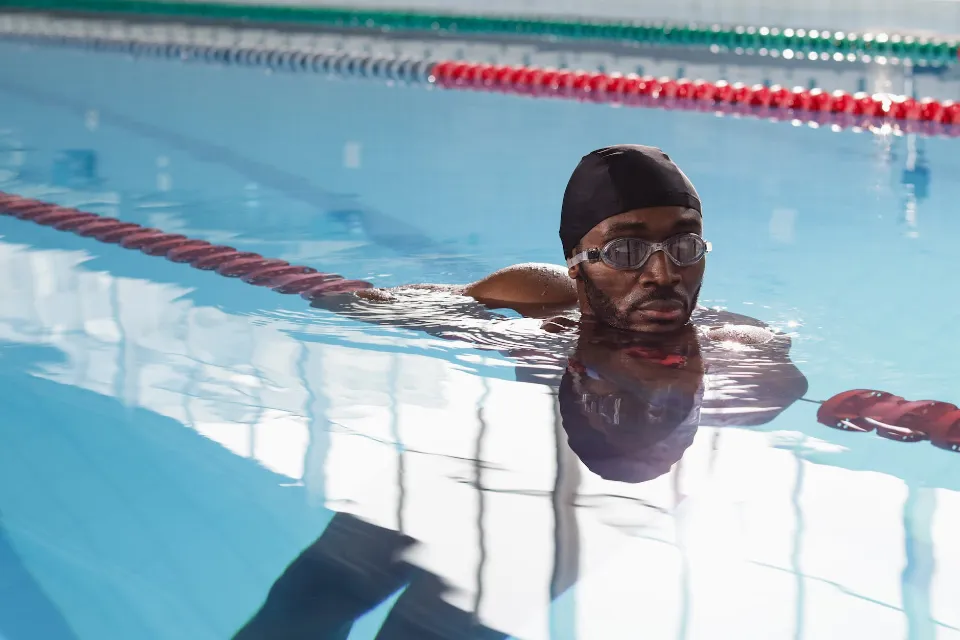How to Clean Swimming Goggles with Simple Steps
Swimming goggles are an essential part of swimming safely and quickly in the water.
You can rinse your lenses in lukewarm water and then polish them with a microfiber cloth to clean swimming goggles.
Clean goggles are the fastest way to sabotage a good swim. Here’s everything you need to know about cleaning your swim goggles and keeping them in tip-top shape. But as much as your swim goggles take care of you, you should also be taking care of your swim goggles!
We’ll go over the best techniques for cleaning swim goggles in this guide so they stay clear and spotless for every lap.
Let’s jump right in!
How to Clean Swimming Goggles
1. Rinse With Cold Water After Swimming
After exiting the water (or the lake, if open water is your thing! ), the quickest and simplest way to keep the goggle lenses clean is to give them a quick rinse.).
Any condensation and water-borne bacteria that might encourage the growth of mold and bacteria in the folds of your swim goggles’ gaskets can be eliminated with the aid of some fresh, clean water.
A quick rinse will greatly extend the life of your goggles and keep them spotless for your subsequent swim.
2. Use An Anti-fog Spray
While there are some excellent anti-fog swim goggles on the market, the reality is that the delicate anti-fog coating on the inside of your goggle lenses will fade and deteriorate over time.
When in reality they may have simply lost their anti-fog, this can give the impression that they are dirty.
Swim goggle anti-fog sprays are inexpensive, effective right away, and can help you see clearly for a lot longer than they would if you just let the anti-fog coating fade into the distance (or in this case, into the deep end of the pool).
3. Let Them Dry (and Store Them Properly)
In close-quarters, moist environments, mould and other unpleasant things can fester and grow.
This is why it’s so important to give your swim goggles (and the rest of your swim gear, from your training suit to your swim towel) a chance to dry out so that mold doesn’t have a chance to establish itself in your swim goggles.
Once you’ve given them a rinse, let them “breathe” and dry out before tossing them into the depths of your swim bag for the drive home. To prevent scuffs and dirt from accumulating on the goggles, you could also store them in a swim goggle case.
4. Avoid the Urge to Rub the Inside of Your Goggles
This is a habit that I still have not cracked—the temptation to wipe away a droplet of condensation so that The pace clock is often too difficult to beat, I can see that now.
But as we discussed earlier, the fragile nature of the anti-fog coating means it can be rubbed away by the well-meaning but otherwise short-term-thinking finger swipe.
Furthermore, the oils on your fingers will contaminate the lens inside of your goggles.
(All that said, there is ONE set of swim goggles—the Arena Swipe Ultra Anti-Fog Swim Goggles—that uses the finger swipe as a way to “reset” the anti-fog coating. Seriously!)
5. Store Them Away from the Sun
older swimmers, including myself!—remember when swim goggles only came with latex straps. Goggles are less expensive because latex is less expensive, but it is much more prone to cracking and degradation from exposure.
The majority of goggles are now made of silicone, which is far more durable than latex and is used for everything from the gaskets to the head straps.
However, it is not impervious to UV rays, which can eventually cause the straps and gasket that fits snugly against your face to prevent leaks in your swim goggles to crack and become brittle.
6. Use Vinegar to Clean Moldy Swim Goggles
Left your goggles in the basement of your swimming bag for well, who knows how long, and it’s gotten real smelly?
Let the goggles soak in a bowl with a few tablespoons of white vinegar and some warm water for 60 to 120 minutes.
White vinegar is an excellent antifungal and antibacterial, so if your swim goggles pop a case of the moldies, soaking them in a blend of white vinegar and water can help zap the goggles back to cleanliness.

How to Maintain Swimming Goggles
Do Not Touch the Inside of the Lens
Protecting this coating is essential to maintaining clear vision over the course of your goggles’ lifespan because it is a permanent, chemical-resistant anti-fog coating that is also present on the inside of diving masks. Please refrain from touching the inside of your lens because the micro-texture of your fingers and the oils in your skin together will harm this layer. This also holds true when using towels, cloths, or any other materials that could potentially remove the anti-fog coating.
Rinse Thoroughly
Once you’ve completed your swim, rinse your goggles with clean, cold water. Let the water flow over both lenses while holding them under the faucet. Also, always be sure to rinse them if they have been exposed to salt water, sunscreen, bug spray or cosmetics to ensure the integrity of the anti-fog coating.
Store Properly
After being rinsed, store your goggles in the included protective case to protect the lens from scratches and scuffs when not in use. The carry case provided is a tough, ventilated case that allows your goggles to dry while protecting them from scratches. Recycle the black plastic sleeve that comes with new goggles so that your lenses have more space to dry out.
Avoid Extreme Temperatures
Wearing your goggles in hot tubs, saunas, or steam rooms is not recommended. The lens of the goggles may become permanently damaged if they are exposed to heat.
Clearing Fog
Foggy goggles are the direct result of unequal temperatures between the lens, water, and surrounding air. The best way to deal with foggy goggles is simply dipping the goggles/lens into the water as this will equalize the temperature and eliminate any fog.
Keeping your goggles in top shape and fog free requires very little effort. If you adhere to the straightforward advice we’ve given, you can feel secure knowing that your goggles will be up to the task each time you go swimming.
The Bottom Line
Your swimming goggles are one of your best friends when you are at the pool.
If you want your goggles to help you swim your best, whether you’re wearing your favorite pair to the neighborhood lap swim or your best triathlon pair for a lake swim, make sure to take good care of them.
